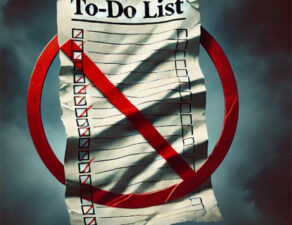
I’m often reminded of a line from Ernest Hemingway’s novel The Sun Also Rises, in which a character is asked how he went bankrupt. His answer: “Two ways. Gradually, then suddenly.”
When dealing with change (bankruptcy-related or otherwise), there are often warning signs along the way — gradual shifts that are easy to dismiss as temporary or not yet consequential, until one day, abruptly, they arrive.

The point is that sudden threats to organizations are rarely truly sudden. The signs were there, but they were missed.
We’ve all heard of the examples: The streetcar company that didn’t appreciate the advent of cars; Kodak sticking with film until it was much too late (despite the fact that it was a Kodak engineer who invented the digital camera); Blockbuster turning down the opportunity to buy a struggling Netflix for a mere $50 million in 2000.
And yet, it keeps happening. Partly because our view of the world is a function of what we believe to be important. Blockbuster, for example, assumed that “movie night” was its main offer – the ability to pop into a store and instantly have a movie whenever you felt like it. Waiting two days for the mail to arrive seemed like an inferior alternative. As it turned out, Netflix, not Blockbuster, was the one to anticipate streaming as the next, best iteration.
Whatever the specifics, the human tendency to embrace evidence that supports our pre-conceived notions and dismiss that which does not (“confirmation bias”), can lead us to ignore the weak signals of change until it’s far too late.
So, how do we avoid getting caught in this trap? There are a few ways…
Check your assumptions.
If we are aware that we tend to think about the future as an extension of current reality, we may be able to step back and see from a different perspective. This requires using our imagination and asking the right questions.
For example, several universities have worked hard to establish a hybrid form of classroom experience for the fall semester. One of the rationales for this effort is survey results in which students demonstrate a strong preference for “a classroom experience.”
But what classroom experience were they envisioning? Was it the familiar kind that they enjoyed pre-COVID, or was it one in which they had to wear a mask all day long, sit far apart from others, commute on public transportation, and bring their own lunch?
Or, consider our current “Zoom fatigue,” and the near-universal lament that it falls short of in-person meetings. Perhaps the pandemic will be what pushes the technology to improve quickly, to the point where it feels like we really are in the same room together. Now that demand for remote meetings for small companies and individuals has skyrocketed, is it possible that an affordable version could become available? Would that change how we feel about video conferences or even about telemedicine? How would that impact your plans?
Your assumptions about what’s coming and when — most of which is based on past experience — may be limiting your ability to “see” the future.
Listen to your constituents.
Your customers, clients, stakeholders, constituents — whatever words you use to describe the people your operation serves — are an important source of insights. If you can hear what they have to say (and if they’ll be honest with you), you’ll learn a great deal more than simply tapping your network of colleagues, friends and family.
I worked with an entrepreneurial doctor who had created a software tool he felt would make challenging decisions easier. He was certain that other doctors would feel the same way (many colleagues told him they liked the idea). So he went ahead and built the product. But when I interviewed doctors to get perspectives and testimonials for an investor pitch deck, I heard a different story. While they liked the concept, they hated working on computers and were reluctant to use anything that required more time staring at a screen.
Whether developing a new approach of your own or evaluating that of a newly arrived competitor, you’ll want to engage the perspective of those who don’t share your world view and who have no vested interest in telling you what you want to hear.
Keep an eye on trends and results.
A common element among companies that find themselves in “sudden” difficulty is the fact that internal indicators, while signaling a challenge for some time, were ignored.
A decline in sales can be rationalized as “a temporary blip.” An emerging, competing technology can be written off as “not ready for prime time.” A reduction in foot traffic can be due to “external factors beyond our control” (retailers love to use bad weather — or good weather — as justification).
While it is certainly possible that a temporary and/or inconsequential shortfall is exactly that, it’s wise to remember that most forest fires begin with a single spark. If you wait until the flames are visible from miles away, you’ve no doubt missed the opportunity to put them out easily.
Keeping a close eye on trends and where they are going will help you identify small threats before they become overwhelming.
Reflections
Whether or not things are going well, it is important to make a habit of checking your assumptions, listening to a broad range of voices, and paying attention to the shifting world around you.
Knowing that we humans tend towards confirmation bias, set aside time periodically to check your interpretation. Look for early, weak signals and consider the impact these might have on your operations, were they to grow in strength and number.
To paraphrase “the most interesting man in the world,” from those old Dos Equis beer commercials, stay curious, my friend!









